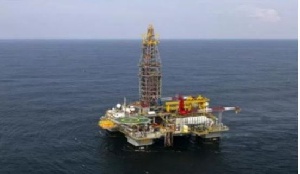 Ghana has produced about one hundred and ninety-four million barrels of crude oil since 2010 to 2016
Ghana has produced about one hundred and ninety-four million barrels of crude oil since 2010 to 2016
Participants at a forum on management of petroleum revenue in the Ashanti Region have expressed disappointment over the management of Ghana’s oil revenue for the past six years.
According to them, they are yet to feel the impact of the 3.4 billion dollars accrued from oil since 2011 in their communities. They want government to use the oil money to solely fund developmental projects instead of using a fraction to assist in completing projects.
This, they argue, will enable the citizenry to easily track projects funded with oil revenue. In 2010, Ghana became an oil and gas-producing country.
The country has from 2010 to 2016 produced about one hundred and ninety-four million barrels of crude oil. Ghana’s share of the petroleum revenue for the past six years stood at 3.4 billion dollars.
Out of this amount, 1.4 billion dollars was allocated for the Annual Budget Funding Amount (ABFA) for agriculture modernization, road and other infrastructure, expenditure and amortization of loans, and capacity building. But after six years of oil and gas production, some Ghanaians say they are yet to feel the impact of the petroleum revenue in their communities.
At a forum held by the Public Interest and Accountability Committee (PIAC) for residents of Ejura-Sekyeredumase municipality and Asante Akim North district in the Ashanti Region some participants expressed their dissatisfaction.
They claimed most of the projects in their respective communities listed as petroleum revenue funded projects were completed even before the country commenced oil and gas production.
They want the government to use the oil money appropriately to benefit all Ghanaians. A resident of Ejura, Nana Adusei Mensah, said more could be done by the government to ensure transparency in managing the oil revenue.
A member of PIAC, Dr Kwabena Nyarko-Otoo, said the concerns raised by participants are justifiable because of low level of information flow. Another member of PIAC, Dr Steve Manteaw, tasked the government to stop combining oil revenue with other government revenue to execute projects. Meanwhile, a joint team from PIAC and the Institute of Financial and Economic Journalists (IFEJ) has toured some project sites funded partly with oil revenue in the Ashanti region.
The 17 millio- cedi Anyinasu-Sekyedumase road was funded with 6.5 million cedis oil revenue. Also, 3.6 million cedis of the oil revenue is said to have been used to complete a 10.2km Amantena-Wiowso road in the Asante Akim North district. But residents claim the project was completed even before the country commenced oil production.
Surfacing of the Agogo township roads and construction of a 6-unit classroom block at Agogo Savior Primary School have a component of oil revenue but residents are unaware. PIAC has recommended that oil money should be used to fund projects from foundation to completion for the sake of transparency and easy identification.